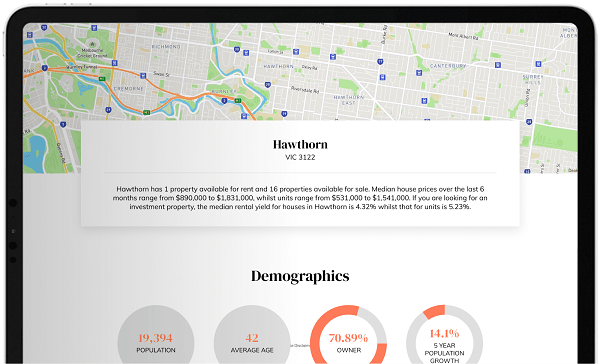10-Point Security Checklist for Keeping Your Property Safe When You Travel
Travelling — whether domestically or internationally — should be a joyous occasion; one that isn’t riddled with worries about what’s going on back home. And while there are certainly no guarantees, there are a number of effective ways to reduce property crime and theft while you’re away from home. Here’s your simple 10-point checklist for keeping your property safe when you travel:
1. Remove Valuables
While there are many ways to reduce the risk of theft, it’s always best to err on the side of caution. This means it’s important to consider ways to minimise the effect of a burglary if your home security is breached. A good idea is to remove small valuables from your home, such as jewellery, spare keys, and any credit cards you’re not taking with you. You could ask a friend or family member to care for these items while you’re gone or arrange for a storage locker to keep valuable items safe until your return.
2. Install Security Cameras
Security cameras such as CCTV systems are commonly used to record instances of crime, but research suggests that simply the presence of such technologies can be enough to improve home security. A study by the Department of Justice and Community Safety’s Community Crime Prevention Unit concludes that CCTV can ‘reduce crime in residential settings‘ and minimise property-related crime. CCTV can also provide peace of mind to homeowners who can monitor their cameras from any connected location.
3. Close Windows and Doors
If you’re travelling towards the end of the summer months, you may have entered into the habit of keeping your windows open overnight to let the cooler temperatures into your home. And while this is one of the best ways to stay cool without using an air conditioner, it does mean you’ll need to be extra vigilant to ensure that all doors and windows are not only closed but also securely locked before you leave. Securing clear entry and exit points such as those are essential for keeping your property safe.
4. Secure Alternative Entry Points
It’s not just doors and windows that can provide easy entry and exit points to your property. Before leaving on your travels, be sure to consider any other point which could be a vulnerability or weakness. This could include rooms of your home which have their own separate entrance, such as a garage or guest house. Also think about any outbuildings you may have, such as sheds or pool houses, which may contain valuable items and prove to be high target areas for potential criminals operating in your area.
5. Set Up Security Lights
Contrary to popular belief, most home security breaches occur during the day, when homeowners are less likely to be present. Thieves are often deterred by the potential presence of the homeowner, so it can be highly effective to create the illusion of occupation while you’re away travelling. Automated security lights are an excellent way to do this. Before leaving, set up the lights to turn on and off throughout the evening. Some systems also allow you to control this using a smartphone or tablet.
6. Restrict Access
Although it is essential to lock all external doors and windows before vacating your property, it can also be a good idea to lock internal doors, particularly doors that are located in high-value areas of the home. Reports show that rooms located on the second storey of a property are typically most likely to be targeted, as these rooms are often bedrooms and studies that contain small, valuable items. By restricting access to these parts of the home, you could reduce the impact of a security breach.
7. Cancel Subscriptions
If you’re planning on being away from your home for a while, you may wish to cancel or pause any subscriptions. Regularly, scheduled deliveries of milk, newspapers, or other items can begin to build upon your doorstep or within your porch area, suggesting that the occupants are not home. If you do not wish to cancel subscriptions, or are unable to do so as part of your contract, you may wish to ask a trusted friend, family member, or neighbour to bring any items into your home on a regular basis.
8. Arrange for Maintenance
Depending on the time of year, and how long you’re planning to be away for, you may wish to arrange of regular maintenance of your garden or yard areas to give the illusion of the property being occupied. Unmown grass and overgrown weeds can suggest that the homeowners are not present. A friend, family member, or a neighbour may help out, or you may wish to employ a professional service. However, be discreet when arranging services, and do not provide more information than is required for the purpose.
9. Test Alarms
Security alarms which detect forced entry or movement within your property can work very effectively, particularly if they are connected to a security service who can take action and attend your property during a breach on your behalf. However, these systems are only as good as the person who maintains them. Before travelling, always ensure that all security alarms are in good working order and, if possible, test them for peace of mind. Also be sure to test fire and gas alarms before vacating the property, too.
10. Check Home Insurance
Although home insurance cannot directly keep your property safe and secure while you are travelling, a good and valid policy can help to reduce the impact of a breach should the worst happen. In the unlikely and unfortunate event that a property crime does take place while you are travelling, you may be able to recover some of the financial loss through your insurer to minimise recovery time. Always be sure to not only check your contents insurance but also building insurance to cover any damage during entry/exit.
Worry-Free Travel
The truth is that property crime can — and does — happen, but it is much easier to minimise the risk, and reduce the impact of a home security breach, simply by following the easy 10-point checklist above. By taking the necessary precautions before you set off, you can enjoy a relaxing, worry-free getaway.
About the author
Kirsty Morbidelliis the U-Store-It Facility Development Manager whose years of experience in the industry allows her to develop and design customised and tailored self-storage training platforms that U-Store-it’s professional storage consultants use to better understand their clients’ needs before providing solutions to suit residential, business and corporate customer’s self-storage needs.


